In this episode, Knicole Emanuel, Partner at Nelson Mullins, discusses Hospitals, the False Claims Act, and How to Fight Back: Real Lessons from Real Cases.
Podcast (hfppodcast): Play in new window | Download
Learn how to listen to The Hospital Finance Podcast® on your mobile device.Highlights of this episode include:
- What makes the False Claims Act, or the FCA, such a powerful tool
- What specific billing/operational errors most often trigger FCA investigations in hospitals
- CIDs — how do they work, and why are they such a serious step in FCA enforcement
- Practical advice for hospitals that want to proactively avoid becoming a target
- FCA risk in 2025
Kelly Wisness: Hi, this is Kelly Wisness. Welcome back to the award-winning Hospital Finance Podcast. We’re pleased to welcome back Knicole Emanuel. Knicole is a partner at Nelson Mullins and has devoted more than 25 years to a healthcare litigation practice with a focus on defending healthcare providers with Medicare and Medicaid issues, including alleged overpayments, reimbursement suspensions due to prepayment review and credible allegations of fraud, False Claims Act accusations, civil investigative demands, anti-kickback, terminations of contracts, and board complaints. She possesses a deep understanding of the complex Medicare and Medicaid payment system, third-party payers, the distinctive business of healthcare providers, the interplay of federal and state Medicare and Medicaid regulations, and the actions of federal and state agencies that impact the operations of healthcare entities. In this episode, we’re discussing hospitals, the False Claims Act, and how to fight back. Real lessons from real cases.
Welcome back, and thank you so much for joining us, Knicole.
Knicole Emanuel: Thanks for having me. This is such a critical topic. Too often we focus on big penalties and forget that some hospitals and providers win when they stand on the right side of documentation and process. The key is knowing where the government is looking and where hospitals are the most vulnerable.
Kelly: Sounds great. I’m looking forward to this one. So, let’s go ahead and jump in. So, what makes the False Claims Act, or the FCA, such a powerful tool in the healthcare space?
Knicole: So, the False Claims Act, or FCA, is found in 31 USC sections 3729-3733. It allows the government or a whistleblower to sue a provider or hospital that submits false or fraudulent claims to Medicare and Medicaid. And what makes it especially powerful is that damages are trebled, which means tripled. Penalties can run $13,000 – $27,000 per claim adjusted for inflation by the Bipartisan Budget Act of 2015. And this adds up quickly when you’re talking about thousands of claims. But here’s the nuance. Intent matters, but not in the way people think. The government does not have to prove fraud in the traditional sense, only that the provider knew or should have known the claim was false. That standard of reckless disregard opens the door to FCA enforcement based on bad billing practices, poor documentation, or systematic sloppiness.
And I’d like to give you a couple examples of this. So, one example is the Tuomey Healthcare System. Tuomey is a small South Carolina hospital. It entered into part-time contracts with 19 specialist physicians allegedly to keep procedures in-house and boost Medicare billing. Now, the DOJ claimed that the contracts violated the Stark Law, which prohibits certain self-referrals, and it also triggers FCA liability. Now, Tuomey didn’t submit false data or overbill services. They billed for actual procedures they actually performed. But the government argued that every claim submitted was tainted by improper referral arrangement. And in 2013, a jury found over 21,000 claims violated the FCA. The court entered judgment of $237 million, despite Tuomey only generating $39 million in Medicare payments from the claims. Now, there was no independent intent. There was no defraud found. The massive damages stemmed from the FCA’s treble damages plus per claim penalties. And this case is a good case to show you as to how outrageous penalties can be. This was a community hospital that faced ruin for violating a complex regulatory rule, even though services were actually rendered and billed correctly.
Now, another example is Agape Senior Community. Agape, another South Carolina-based provider, but this was a hospice provider, was accused by whistleblowers of enrolling patients into hospice who are not terminally ill, allegedly to collect Medicare reimbursements. However, medical eligibility for hospice can be subjective, and the company argued that they followed good faith physician assessments. Now, the government joined this lawsuit and calculated $25,000 per false claim plus treble damages, threatening $2.7 billion in liability. And the actual Medicare reimbursements as normal that were received were far, far less. Agape was facing potential collapse, so it ended up settling for $2.5 million without admitting wrongdoing. Now, this case kind of shows you the disproportionality between the alleged offense and the potential penalty. It illustrates how FCA exposure, even without fraud intent, can cripple providers. The settlement settled was for pennies on the dollar, although it was still a higher amount than what had been provided for the hospice company.
Kelly: Wow. Those are substantial penalties. I’m just sitting over here shaking my head. So, what specific billing or operational errors most often trigger FCA investigations in hospitals?
Knicole: There are several red flags, and surprisingly, they’re common. Mostly, inappropriate inpatient admissions. S,o billing inpatient when the patient could have safely been treated outpatient. This often hinges on medical necessity and documentation of the admission rationale. Upcoding is another reason. If you’re billing for a higher level of service than was rendered. And this includes one of the most popular, is E&M level E or 5 visits without documentation because level 4 or 5 are the two highest E&M visits with 5 being the highest and 4 being the second highest, whereas the auditors generally find that these 4 or 5 should have been level 3. And there’s actually a case that I’d like to talk about. This is the US v. Elfenbein, which was about inflated level 4 claims for COVID-19-related visits. So, during the COVID-19 pandemic, a Maryland physician, Elfenbein, who co-owned and directed urgent care/drive-through clinics billed level 4 E&M codes for patients’ encounters that involved COVID testing. Despite interactions typically lasting only 5 to 10 minutes, the clinic billed the highest level 4 for E&M services. And this code can pay $231 to $354 per visit depending on patient status.
Now, federal prosecutors charged Elfenbein under 18 USC section 1347, which is healthcare fraud, alleging that billing level 4 E&M codes in such scenarios was fraudulent and unsupported by medical necessity. The DOJ labeled him as the first physician convicted at trial for billing high-level E&M visits tied to COVID-19 testing, underscoring broader enforcement against upcoding during the pandemic. Now, in December 2023, a U.S. district judge vacated the guilty verdict, finding that the government failed to prove beyond a reasonable doubt that billing level 4 visits was objectively unreasonable or false. The court emphasized the ambiguity in CPT coding guidance, especially when it came around COVID-specific context, and held that complex regulations shouldn’t be a second-guessed via criminal charge, especially when reasonable interpretations exist.
Okay. Another trigger is ICU codes used for general telemetry patients. Another one is use of modifier 25. This is repeated or inappropriate use to unbundle services. OIG has flagged this specifically. Another trigger is telehealth and RPM fraud, which is remote provider monitoring fraud. Post-pandemic, OIG and DOJ have scrutinized RPM claims, especially under CPT codes 99453, 99454, 99457, and 99458, only in: when there’s not an actual device used, the patient wasn’t eligible, no documented interactive communication occurred, and kickbacks disguised as consulting arrangements. Now, this is often tied to physician-relationships. For example, in Bookwalter v. UPMC, the Third Circuit let a case proceed where a hospital allegedly overcompensated neurosurgeons to induce referrals even when the compensation model looked fair market. And lastly, a couple last triggers, billing for services rendered by unqualified personnel. These patterns are what trigger whistleblower suits, audits, and eventually, civil investigative demands, or CIDs.
Kelly: I love all those specific triggers you provided, Knicole. Let’s go ahead and talk about CIDs. So, how do they work, and why are they such a serious step in FCA enforcement?
Knicole: A civil investigative demand, or a CID, is issued under 31 USC section 3733, and it gives the Department of Justice the ability to demand documents, interrogatories, or even oral testimony before they filed a lawsuit. It’s essentially a pre-litigation subpoena, and it’s often your only warning shot that you’re under federal scrutiny. Hospitals must take them very seriously, not just because of the legal exposure, but because the CID process can shape the outcome of the investigation. Responding improperly can lead to obstruction claims. Over-disclosure can admit liability. Under-disclosure can destroy credibility. You can see how it’s a double-edged sword. In one notable case, a California hospital system received a CID tied to its remote patient billing, or RPM billing, we’ve already talked about. Their legal team was able to show that the devices were FDA-approved, data was transmitted daily, and clinical staff documented every 20-minute interaction under CPT code 99457. Now, that led to the DOJ closing the matter with no action because the records backed up the claims.
Kelly: Thank you for sharing that. That’s very interesting about the CIDs. Are there examples of providers winning, either getting cases dismissed, or fighting whistleblowers successfully?
Knicole: Yes, and it’s important to spotlight them because not every FCA investigation ends in a payment or payout and a penalty. So as an example, United States ex rel. Druding v. Care Alternatives, the Third Circuit, 2020. This was a hospice FCA case where it was alleged that medical judgment about eligibility for a hospice was fraudulent. The court sided with the provider, ruling that differences in clinical judgment do not equal fraud. And this set a very important precedent. Another case is United States versus MedQuest Associates, Sixth Circuit, 2012. The court overturned $11 million judgment because CMS had not clearly stated that certain violations, like performing services under a different MPI, were conditions of payment. And that’s critical because the Escobar case from 2016 clarified that not every rule violation triggers FCA liability.
And lastly, the case U.S. ex rel. Polansky versus Executive Health Resources. This case was decided by the Supreme Court of the United States in 2023, and it reaffirmed that the DOJ can dismiss qui tam suits even after declining to intervene, giving providers some relief from aggressive relators when the government sees no merit. These are reminders that if a hospital has the facts, the FCA is defendable, especially when the claims are based on medical judgment or documentation is strong. Just make sure you have somebody defending you who is specialized in this type of law.
Kelly: Well, that makes a lot of sense. And I’m sure the providers listening are happy to hear that there are some that actually win the cases out there. So, Knicole, what practical advice do you have for hospitals that want to proactively avoid becoming a target?
Knicole: Now, avoiding FCA exposure means going beyond checking boxes. Here are concrete strategies. Audit high-risk areas quarterly. The examples of high-risk areas are RPM, ED coding, inpatient versus outpatient status, and modifier use. Train coders and clinicians together, not separately. A lot of hospitals train coders and clinicians separately. Now, misalignment leads to documentation gaps. Document clinical rationale explicitly. Not just vitals, but decision-making. If it’s not in the record, it didn’t happen. We’ve all heard this before, but make sure you apply it when you’re dealing with clinical rationale. Implement a pre-bill review process, especially for those high-dollar claims. And keep your compliance hotline active. And respond internally before a whistleblower does. Lastly, if you’re engaging in new programs, like the RPM or value-based care, do a legal review before billing starts. The DOJ is looking closely at programs rolled out too quickly without infrastructure.
Kelly: We really appreciate all that practical advice. Those are some great tips. Final thoughts, what should hospital executives know right now about FCA risk in 2025?
Knicole: Everything. Just kidding. [laughter]
2025, I mean, we are looking at a year that is shaping up to be another active enforcement year, especially with renewed funding for Medicare fraud initiatives under the Inflation Reduction Act. The DOJ has made it clear. They’re focused on quality of care, patient harm, and overbilling. But it’s not just about avoiding punishment. Strong compliance programs and accurate billing protect the financial health of your institution and your patients. If hospitals shift from a reactive to a proactive compliance culture, they can both reduce risk and be ready to defend themselves, and even win when challenged.
Kelly: Thank you for sharing that with us. That’s a really important point. So, thank you so much, Knicole, for sharing your insights with us on hospitals, the False Claims Act, and how to fight back. Real lessons from real cases. Thank you so much again.
Knicole: Absolutely.
Kelly: So, if a listener wants to learn more or contact you to discuss this topic further, how best can they do that?
Knicole: They can contact me by email or by phone. Just remember that Knicole starts with a K. So, it’s K-N-I-C-O-L-E, dot Emanuel, E-M-A-N-U-E-L, at nelsonmullins.com. And my direct dial there is 919-329-3824. Look forward to talking to you.
Kelly: Great. Thank you so much for providing that. And thank you all for joining us for this episode of The Hospital Finance Podcast. Until next time…
[music] This concludes today’s episode of The Hospital Finance Podcast. For show notes and additional resources to help you protect and enhance revenue at your hospital, visit besler.com/podcasts. The Hospital Finance Podcast is a production of BESLER | SMART ABOUT REVENUE, TENACIOUS ABOUT RESULTS.
If you have a topic that you’d like us to discuss on the Hospital Finance podcast or if you’d like to be a guest, drop us a line at update@besler.com.





